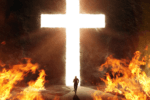Traditional Pentecostals were among the first in our nation to embrace the baptism of the Holy Spirit. But have they kept in step with the Holy Spirit since? Charisma takes a comprehensive look at the classical Pentecostal community—both past and present.
Over the years, the Pentecostals have been called by various names. Although many of the first Pentecostal churches in the United States were known as “Holiness” churches, the first strictly Pentecostal groups used variations of the name “Apostolic Faith.” This was the name chosen by Charles Parham for his small group in Topeka, Kan., when Pentecost fell in 1901. When Parham’s African-American follower and friend, William J. Seymour, opened the famous Azusa Street Mission in Los Angeles in 1906 he also used the name Apostolic Faith.
In the years that followed, other names such as “Full Gospel,” “Pentecostal” and “Latter Rain” were used. At times, the public scornfully called these Spirit-filled believers “holy rollers,” a name universally rejected by adherents of the movement. Many of the new denominations used the word “Pentecostal” in their names, while others adopted more doctrinally neutral names such as Assemblies of God, Church of God, Church of the Foursquare Gospel, and Church of God in Christ.
For many decades, the Pentecostals were the outcasts of religious society. One reason for this rejection was that most of the first Pentecostal churches were planted among the poor and disinherited classes.
Despite being cast out of the mainline churches, the Pentecostals grew, especially in the years following World War II. A fertile ground for growth was found among blacks and poor whites in the South and Midwest. Many Pentecostals mirrored the stereotypes of the Oklahoma families who fled the dustbowl of the 1930s to find new opportunity in California. Indeed, the central family in John Steinbeck’s novel The Grapes of Wrath was based on a Pentecostal Holiness family, the Tathams from Sallisaw, Okla.
In fact, the first region of the world where the Pentecostals became a mass grass-roots movement was in the American South. The headquarters cities of these churches say much about their origins. These include such Southern and Midwestern cities as Cleveland, Tenn.; Memphis, Tenn.; Oklahoma City; St. Louis; and Springfield, Mo.
Despite their economic poverty, the Pentecostals soon sent missionaries all over the world and in time began to grow faster than most other Christian denominations. Although they grew especially fast in Third World countries, they also made surprising inroads in Europe and North America.
After World War II, the Pentecostals began to prosper and rise into the middle class. With this new prosperity came greater social acceptance than ever before. The skyrocketing growth rates of Pentecostal churches also forced the major mainline denominations to take a new look at them and what they believed.
There are now more than 100 Pentecostal denominations in the United States and thousands of smaller fellowships and independent churches. As a rule of thumb, for every congregation that is part of an organized denomination, there exists an independent Pentecostal congregation. Thus the number of unaffiliated independent Pentecostal churches in the U.S. roughly matches the number of churches in the major denominations such as the Assemblies of God.
Holiness-Pentecostal Churches
The first American Pentecostal churches began with deep roots in the Wesleyan-Holiness movement that had spread across America during the 19th century. For decades holiness teachers and preachers had taught that there were two “blessings” offered to believers. The first, justification by faith, was also called a “new birth.” This crisis of conversion was a common understanding and experience for most evangelical believers in America.
The Wesleyans, however, claimed a “second blessing” that was eventually called “entire sanctification”—an instant experience that gave the believer victory over sin and perfect love toward God and man. Most of the first generation of Pentecostals were from this holiness stream that had its roots in Methodism.
When the Pentecostal movement began, these “Holiness-Pentecostals” simply added the baptism in the Holy Spirit with tongues as “initial evidence” of a “third blessing” that brought power for witnessing to those who had already been sanctified. The historic Azusa Street testimony was: “I am saved, sanctified and filled with the Holy Ghost.”
These early Pentecostals also stressed instant divine healing “as in the atonement” and the premillennial second coming of Christ to rapture the church at the end of the age. This was known as the “fivefold gospel” of Parham, Seymour, Azusa Street and the first Pentecostal denominations.
These churches also adopted strict “holiness codes” that forbade their members to use tobacco or alcohol, or to attend movies, theaters or other places of “worldly amusement.” Also outlawed were professional sports, “outward adornments” such as lipstick or “bobbed hair,” and immodest dress.
The first family of American Pentecostal churches, therefore, could be classified as Wesleyan Pentecostals due to the basic Arminian perfectionist theology that was inherited from the Holiness movement. For the memberships of the major Wesleyan Pentecostal denominations (and the other denominations’ memberships listed in this article), I consulted the Yearbook of American and Canadian Churches 2010, which contains the latest data available.
Some of the major Wesleyan Pentecostal churches with their 2010 memberships include Church of God in Christ (5.5 million); Church of God, Cleveland, Tenn. (1.1 million); Pentecostal Holiness Church (330,000); Church of God of Prophecy (89,674); United Holy Church (50,000); Congregational Holiness Church (25,000).
Baptistic Pentecostal Churches
The Holiness-Pentecostal churches were the first organized Pentecostal churches in the world. But as the movement exploded around the nation and the world, thousands of converts were attracted to the movement who did not have roots in the Wesleyan theological stream. Many of these new Pentecostals were from Baptist, Presbyterian or other reformed backgrounds. Soon, some of these seekers went directly from conversion to the baptism in the Holy Spirit without the intervening “second blessing” of sanctification.
The first man to challenge the “three blessing” theology was William H. Durham of Chicago. A longtime Holiness preacher prior to his Pentecostal experience, he stopped preaching instant sanctification as he searched for a new theology. By 1911, he fashioned what he called the “finished work of Calvary” theology, which denied the necessity of a “second blessing” experience prior to speaking in tongues.
For Durham, sanctification was a gradual process that began at conversion followed by a progressive growth. This teaching, so revolutionary for the times, opened a wide theological rift in the Pentecostal movement with leaders such as Parham, Seymour and other major Pentecostal leaders denouncing the “finished work” teaching as a threat to the survival of the movement.
In time, independent Pentecostals who agreed with Durham joined together to form the Assemblies of God in 1914 under the leadership of E.N. Bell. Most of the Pentecostal churches in the world that were formed subsequently affirmed the Durham view. The major American denominations in this category with their 2010 memberships include Assemblies of God (2.9 million); International Church of the Foursquare Gospel (255,773); Pentecostal Church of God (98,579); Open Bible Churches (45,000).
The Oneness Pentecostals
Known as the “one blessing” Pentecostals, a third stream of American Pentecostalism was the “Oneness” movement, which is non-Trinitarian while remaining basically evangelical and Pentecostal. Often pejoratively called the “Jesus Only” movement in the early days, insiders preferred the labels “Oneness,” “Jesus Name,” or “Apostolic.” While the Holiness Pentecostals taught three blessings and the Finished Work Pentecostals two blessings, the Oneness Pentecostals taught a “one blessing” approach where everything—salvation, finished-work sanctification and baptism in the Holy Spirit with tongues—was received in the waters of baptism by immersion in the “name of Jesus.”
According to Oneness teaching, the only valid baptism was in “Jesus’ name” and not “in the name of the Father, Son and Holy Ghost.” Trinitarian baptism was seen as a Roman Catholic error forced on the church with the Nicean Creed in A.D. 325. Therefore anyone who received Trinitarian baptism was not fully Christian. Also, these were the only Pentecostals in the world who taught that speaking in tongues was necessary to salvation. Without tongues, they taught, baptismal regeneration was impossible.
Because of this theology, the Oneness Pentecostals launched a determined campaign to rebaptize all Pentecostal members using the Jesus Name formula. At first they were spectacularly successful, even rebaptizing the General Superintendent of the Assemblies of God, E.N. Bell. In a short time, however, Trinitarian leaders were able to swing the Assemblies of God back into the Trinitarian fold. Led by J. Roswell Flower and John W. Welch, Bell returned to the Trinitarian position. The Assemblies of God and the church rejected the oneness challenge in 1916.
The separation was costly for the infant Assemblies of God. The entire Louisiana District joined the Oneness cause, as did hundreds of pastors and churches across the nation. A large church allied with the Assemblies of God was a congregation in Indianapolis under the leadership of African-American pastor Thomas Garfield Haywood. When he joined the “oneness” movement, large numbers of black pastors joined with him to form hundreds of Apostolic and Jesus Name churches across the nation.
In time, two of the other Oneness denominations merged to produce the United Pentecostal Church. The memberships of the major Oneness churches in 2010 were: United Pentecostal Church (646,304), Pentecostal Assemblies of the World (1.5 million).
The Canadian Pentecostals
Pentecostalism arrived early in Canada with major influences from the United States. Some of the early Pentecostal leaders included R.E. McAlister, A.G. Ward and Aimee Semple McPherson, who was born in Canada but made her reputation mainly in the U.S.
The major Pentecostal church in Canada has been the Pentecostal Assemblies of Canada, an indigenous church with close doctrinal and historic ties with the American Assemblies of God. Other Canadian Pentecostal denominations were planted by American churches, such as the Church of God, the International Church of the Foursquare Gospel, the Pentecostal Holiness Church and the United Pentecostal Church.
The memberships of the classical Pentecostal churches in Canada, according to the Yearbook of American and Canadian Churches 2010, were: Pentecostal Assemblies of Canada (232,000), Pentecostal Churches of Newfoundland (26,432), United Pentecostal Church (19,684), Church of God-Cleveland, Tenn. (14,709), Church of God of Prophecy (4,217), International Church of the Foursquare Gospel (3,307), Pentecostal Holiness Church (3,000).
Classical Pentecostals in the Modern Era
After World War II, many American Pentecostal churches rediscovered each other when they joined the National Association of Evangelicals (NAE). This led to some softening of theological differences and the creation of the Pentecostal Fellowship of North America (PFNA) in 1948. This all-white body was dismantled in 1994 with the creation of the racially inclusive Pentecostal/Charismatic Churches of North America (PCCNA) during a meeting that was called the “Memphis Miracle.” Since that time, there have officially been no racial barriers to fellowship on the leadership level.
By 1960, Pentecostalism spilled over into the mainline Protestant churches and in 1967 into the Roman Catholic Church. Many believe that the healing crusades of Oral Roberts and other TV evangelists helped bring Pentecostalism into the living rooms of the American people. Father Kilian McDonnell, the noted Catholic theologian, said, “Behind every one of the early neo-Pentecostals stood a classical Pentecostal.”
The greatest contribution the Pentecostals have made to the body of Christ has been the dismantling of the ancient “Cessation Theory” that claimed the miraculous gifts of the Spirit ceased with the apostles. Today there is hardly a congregation in the Christian world where no members speak in tongues and pray for the sick.
Today Pentecostalism is one of the largest Christian movements in the world, representing almost a third of the world’s 2 billion Christians. Most of the movement’s growth is in Africa, Asia and Latin America, an area known as the Global South, but it has slowed in the West.
Pentecostals have also built some the largest congregations in the history of Christianity. In many cities of the world huge Pentecostal churches are the largest Christian witness in the city. The largest of all is the Yoido Full Gospel Church in Seoul, South Korea, founded by Assemblies of God pastor David Yonggi Cho, which numbered more than 800,000 members at its peak. Other Pentecostal churches in Nigeria and India seat 50,000 people.
The universal impact of Pentecostalism is borne out in the fact that more than two-thirds of Christians in developing countries identify themselves as Pentecostal or charismatic. A few key gatherings of this global community in the last several years include:
Pentecostals from more than 30 countries gathered in April 2006 to celebrate the 100th anniversary of the Azusa Street Revival. While the original revival was a series of prayer meetings that began in the spring of 1906 in a former stable in downtown Los Angeles, the centennial event was commemorated at more glamorous venues in the city: the Faith Dome, the Angelus Temple, the Los Angeles Convention Center and West Angeles Cathedral.
In April 2010, some 10,000 Pentecostals representing 95 nations jammed into the Mabee Center at Oral Roberts University in Tulsa, Okla., for the Empowered21 Global Congress on Holy Spirit Empowerment to honor the pioneers of the Pentecostal movement, focus on crucial issues facing the movement and pass the torch of Holy Spirit renewal to the younger generation. Leaders who attended represented the Assemblies of God, Church of God in Christ, Foursquare Church, Pentecostal Holiness, Church of God of Prophecy and Church of God (Cleveland, Tenn.)—as well as directors of various independent Pentecostal ministries. At least half the crowd in Tulsa was young, which created a sense of hope for the movement’s future. Many of the same leaders will meet at Regent University in Virginia Beach, Va., Feb. 29-Mar. 3 for the similarly themed Empowered21 USA Summit.
In a similar event last August, a cross-section of Pentecostal leaders from more than 70 nations met in Stockholm for the 22nd Pentecostal World Conference to focus on equipping churches for spiritual leadership. Some 2,000 people participated, including both a sizeable number of young emerging leaders and members of most of the classical Pentecostal denominations, such as the Church of God (Cleveland, Tenn.), Church of God of Prophecy, Assemblies of God and International Pentecostal Holiness Church (IPHC). “One of the major issues facing Pentecostals is to make sure that 100 years after Azusa Street, we are faithful in passing on to the next generation the reality and the power of Pentecost,” said Bishop James Leggett, former general superintendent of the IPHC and chairman of the host organization, the Pentecostal World Fellowship. The 23rd Pentecostal World Conference is scheduled for August 2013 in Kuala Lumpur, Malaysia. The conference has been held roughly every three years since 1947 at numerous cities around the globe. More than 100,000 people attended the meeting in Seoul, South Korea, in 1998.
Classical Pentecostals also gave their support last year to two hot-button social concerns: poverty and immigration. Each initiative reflected the historical Pentecostal dedication to the welfare of the poor and identification with marginalized social groups:
The Assemblies of God and Church of God (Cleveland, Tenn.) were among the dozens of ministries that endorsed Micah 2010, a Britain-based campaign to pray and take action against extreme poverty. In August, the CoG passed a resolution calling on the governments represented by its nearly 7 million members worldwide to halve extreme global poverty by 2015.
A diverse group of Pentecostal leaders issued a joint statement calling for a compassionate resolution to the complex U.S. immigration reform policy. Signatories included the Rev. Samuel Rodriguez, an Assemblies of God minister and president of the National Hispanic Christian Leadership Conference, and Bishop George McKinney, pastor of St. Stephen’s Cathedral Church of God in Christ.
Also in 2010, academia recognized the effect Pentecostalism is having on shifting the momentum of Christianity from the Western world to the Southern Hemisphere. A group of select universities that included the University of Notre Dame and the University of Chicago received grant money from the John Templeton Foundation to conduct research on the growing movement. The Center for Religion and Civic Culture at the University of Southern California administered the monies to five centers and 16 scholars and their teams totaling $3.5 million. The center received close to 500 applications from researchers worldwide.
All of these are signs of the great Pentecostal revival that spread worldwide from the humble Azusa Street Mission in Los Angeles. Charles Parham and William J. Seymour could hardly have imagined the amazing scope of the Pentecostal movements that grew from a few Spirit-filled people in Topeka and Los Angeles at the turn of the century to encompass the entire globe.
Vinson Synan is dean of the School of Divinity at Regent University in Virginia Beach, Va., as well as a historian of the Pentecostal movement. He is the author of 16 books, 15 of which are related to Pentecostal and charismatic history. He has served as director of the Holy Spirit Research Center at Oral Roberts University and General Secretary of the International Pentecostal Holiness Church.
A Classical Who’s Who
Identifying the leaders and major shapers of the classical Pentecostal community
Church of God (CoG)

Currently in his second term as general overseer, Culpepper was originally elected at the CoG General Assembly in 2008. He has held several key leadership roles in the denomination, including State Youth and Education Director for Northern California, Nevada, Indiana and Alabama. He is the founding pastor of Riverchase Church of God in Birmingham, Ala. (later renamed Metropolitan Church of God), which he grew into one of the most well-known churches of the denomination.
Headquarters: Cleveland, Tenn.
Founded: 1886 churchofgod.org
Church of God in Christ (COGIC)

Blake was appointed as presiding bishop by the COGIC General Assembly in 2007, and the following year at the denomination’s 101st Holy Convocation in Memphis, Tenn., he was elected as presiding bishop for a four-year term. He serves on President Obama’s 25-person White House Advisory Council on Faith-Based and Neighborhood Partnerships and is pastor of the 24,000-member West Angeles Church of God in Christ in Los Angeles.
Headquarters: Memphis, Tenn.
Founded: 1907 cogic.net
International Pentecostal Holiness Church (IPHC)

After being elected vice chairman of the IPHC in 2005, Carpenter became general superintendent of the IPHC in 2009. He served as executive director of the denomination’s Evangelism USA program for 12 years and has been chairman of the board of its Chaplains Ministries. He pastored for 16 years and was the conference superintendent in the denomination’s Upper South Carolina Conference for 11 years. He has been in the ministry since age 16.
Headquarters: Bethany, Okla.
Founded: 1911 iphc.org
Assemblies of God (AG)

Wood was elected chief executive officer of the Assemblies of God in 2007 at the denomination’s 52nd General Council. Prior to that he served as the AG general secretary for 14 years. From 1988 to 1993 he was assistant superintendent of the Southern California District and pastored Newport-Mesa Christian Center in Costa Mesa, Calif., for 17 years. The son of missionary parents to China and Tibet, Wood also is an attorney and a member of the California State Bar.
Headquarters: Springfield, Mo.
Founded: 1914 ag.org
International Church of the Foursquare Gospel (The Foursquare Church)

After pastoring Foursquare churches in the Southeast for a number of years, Burris was appointed district supervisor of Foursquare’s Southeast District in 1992. He became general supervisor of the U.S. national church in 2002 and in 2008 began leading The Foursquare Church as interim president for a 13-month term. He was appointed president by the convention voting body, and began serving a five-year term on Oct. 1, 2010.
Headquarters: Los Angeles
Founded: 1923 foursquare.org
Open Bible Churches

In addition to being president of the Open Bible Churches’ association of Pentecostal/charismatic churches, Farmer is chairman of the Pentecostal/ Charismatic Churches of North America, representing over 480,000 churches and nearly 90 million followers of Christ worldwide. Open Bible Churches stresses simple faith, prayer, evangelism, international missions and fellowship with other Christian groups. (For more on Farmer, see our story on p. 36.)
Headquarters: Des Moines, Iowa
Founded: 1935 openbible.org







Leave a Comment
You must be logged in to post a comment.